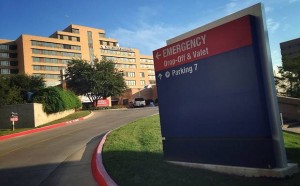 My story raising questions about a Texas task force’s selection of Parkland Memorial Hospital and UT Southwestern Medical Center to head up a new Ebola treatment center has prompted a strange response from Parkland.
My story raising questions about a Texas task force’s selection of Parkland Memorial Hospital and UT Southwestern Medical Center to head up a new Ebola treatment center has prompted a strange response from Parkland.
One of its senior executives accuses me in a press statement this week of bamboozling some of the most prominent health-care experts in the industry, and my news organization of trying to divide Dallas’ medical community.
First, some quick background. My Oct. 24 article featured three national experts on hospital management who in recent years have expressed concerns about Parkland’s approach to patient safety or transparency. Until late last year, Parkland and UTSW were at the center of a rare two-year federal safety intervention to try to remedy what regulators called life-threatening failures in infection control and other practices at Parkland. UTSW oversees the hospital’s clinical care.
After they were tapped as the operators of the newly created Ebola center, I naturally revisited that history in interviews with the experts. It’s my responsibility as a watchdog reporter to follow up on such issues. The professionals in turn questioned whether the task force had considered the safety record of both institutions. They also called for transparency about whether Parkland and UTSW have tackled the longstanding problems in their academic partnership.
Consultants and government officials have warned over the years that their differences - divergent missions, turf battles and clashing business interests - must be fixed to ensure effective patient care. Officials with Parkland and UTSW have not responded to our questions about those issues, highlighted in our 2013 Chronic Condition investigation.
Back to the Parkland complaint. Michael Malaise, a senior public affairs executive with Parkland, circulated an email to Dallas “opinion leaders and media” alleging that I had made false claims in my conversations with the experts intended to “coax a particular response from them.” He also accused The Dallas Morning News, whose ongoing investigation triggered the unusual federal crackdown, of being “obsessed with promoting discord” within the local medical community.
For the record, we understand the enormous task Parkland employees have confronted in overhauling their hospital’s operations over the last three years. But the public shouldn’t confuse our investigative reporting with promoting discord.
Also, the experts in my story weren’t in any way misled. To the contrary, they said they found my approach – and the story – fair and accurate.
Below, I respond further to the Parkland allegations:








